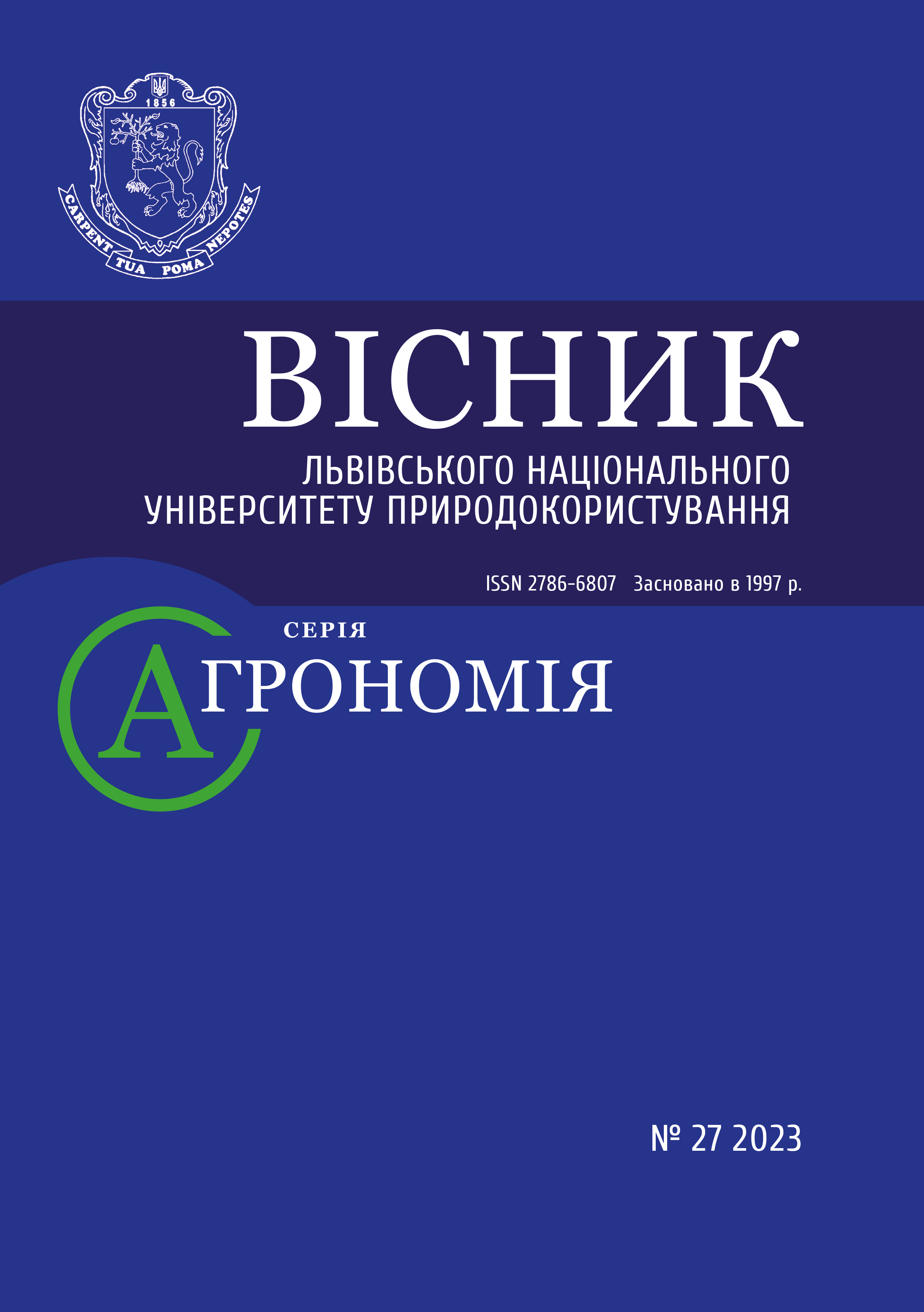EFFICIENCY OF GROWING MAJOR CROPS ON SOILS RELEASED FROM HORTICULTURE UNDER THEIR OPTIMIZED FERTILIZATION
DOI:
https://doi.org/10.31734/agronomy2023.27.150Keywords:
mineral fertilizers, soil after intensive horticulture, soil after extensive horticulture, cultivation, winter wheat, sunflower, corn, nutrients, NPK, planned yield, profitabilityAbstract
One of the main methods to improve the economic efficiency of grain production apart from the garden uprooting is to provide plants with the main nutrients: nitrogen, phosphorus, and potassium through the rational and science-based mineral fertilization of soils, taking into account the presence of nutrients in them. The article deals with the transfer of soils after perennial plantations into the use for field crop rotation on gray forest soils for growing the major crops with optimized fertilization on the example of the farm in Vinnytsia region in the conditions of the Forest-Steppe of Right-Bank Ukraine. The economic efficiency of the elements of the crop cultivation technology was calculated based on the weighted average selling prices for the grown products and prices for mineral fertilizers in 2021. Two variants of the rate of application of mineral fertilizers under the planned yield of winter wheat at the level of 7.0 t/ha, corn 11.2 t/ha, and sunflower 3.5 t/ha considered the available nutrients in the soil. It was established that in the variant after intensive horticulture, the soil needed more fertilizers. Thus, for growing winter wheat, there was an increase in production costs for grown products by UAH 1,636/ha, for corn by UAH 2,041.5/ha, and for sunflower by UAH 2,132/ha, respectively, compared to the option after an extensive garden. It was established that in the variant of cultivation after extensive horticulture under winter wheat, corn, and sunflower, the yield increase is noted by 0.397, 0.497 and 0.107 t/ha respectively. It was found that after extensive horticulture, the level of profitability was higher by 27.9 % for the cultivation of winter wheat, by 29.4 % – for corn, and by 31.5 % – for sunflower.
References
Hnyp H. “Agrana Fruit Luka” is getting rid of obsolete varieties of apple trees. AgroTimes. URL: https://agrotimes.ua/ovochi-sad/agrana-frut-luka-pozbavlyayetsya-neaktualnyh-sortiv-yablun/ (Accessed June 18, 2023).
In Britain, farmers refuse to plant new apple orchards. Gardening magazine. URL: https://techhorticulture.com/u-brytaniyi-fermery-vidmovlyayutsya-zakladaty-novi-yablunevi-sady/ (Accessed June 18, 2023).
Kobyletskyi V. R. Profitability. Essence and indicators. Online magazine “Financial Analysis online”. URL: https://analizua.com/metodyka-rozrakhunku-2/229-rentabelnist (Accessed June 13, 2023).
Riazanov S. F., Melnyk V. O. Agrochemical evaluation of soils under horticulture on the suitability of their usage for the main crops growing. Agriculture and forestry. 2022. No 1 (24). P. 171–181. DOI: https://doi.org/10.37128/2707-5826-2022-1-12.
Shmyhel O. Ye. Economic efficiency of chemical application in agricultural enterprises: diss. ... candidate economy sciences: 08.00.04. Ternopil, 2008. 203 p.
The area under orchards in Ukraine decreased by almost 120,000 hectares. Landlord. URL: https://landlord.ua/news/ploshchi-pid-sadamy-v-ukraini-skorotylysia-maizhe-na-120-tys-hektariv/ (Accessed June 16, 2023).
They plan to cut down 3,000 hectares of apple orchards in Vinnytsia. URL: https://24.vn.ua/na-vinnychchyni-planuyut-vyrubaty-3-tysyachi-gektariv-yablunevyh-sadiv/ (Accessed June 13, 2023).
Vasylenko M. D. Organic-mineral fertilizers increase the yield and improve the quality of products. Foothill and mountain agriculture and animal husbandry: interdepartmental thematic collection. 2015. No 58 (I). P. 22–30.
Why are Ukrainian gardeners uprooting apple orchards at a time when increasingly high domestic prices provoke imports? URL: https://east-fruit.com/uk/novyny/chomu-ukrayinski-sadivnyky-korchuyut-yablunevi-sady-v-toy-chas-yak-dedali-bilshi-vnutrishni-tsiny-provokuyut-import/ (Accessed June 18, 2023).
Yakovenko R. V., Kopytko P. H. Productivity of young plantings and quality of pear fruits depending on soil fertilization and foliar fertilization. Bulletin of Uman State University. 2016. No 1. P. 31–37.


